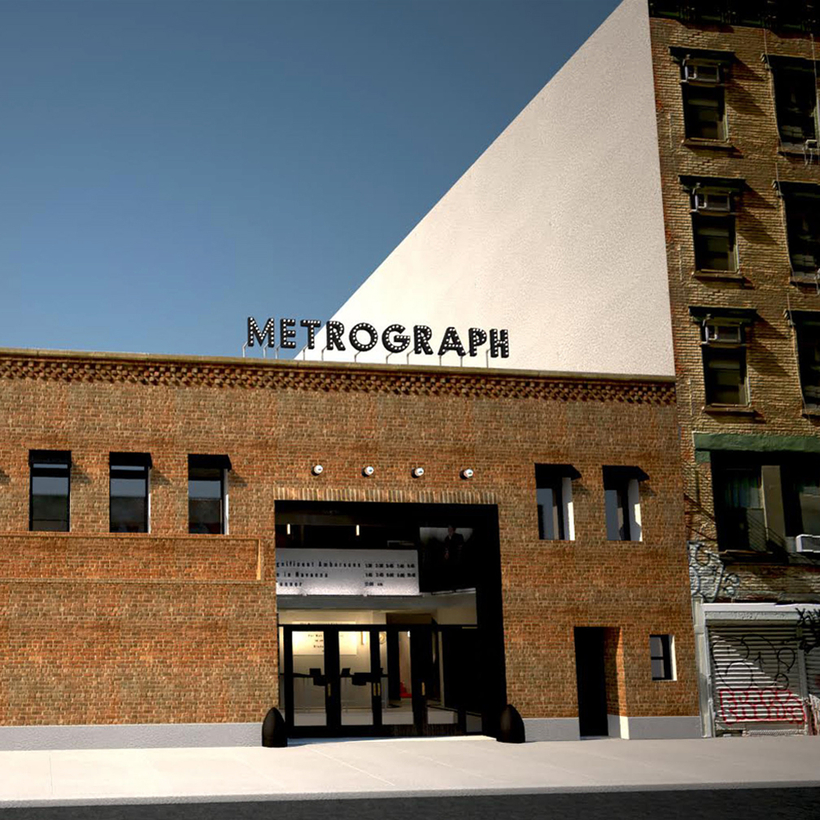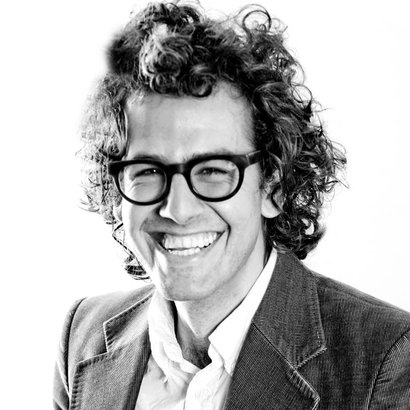It was sometime in 2010, touring the country’s finer movie theaters with his first film, The Windmill Movie, that Alexander Olch first started to think seriously about “the rooms in which movies play.” He’d grown up with the glories of the Beekman, the Paris, the Ziegfeld, all dead or dying at that moment when his interest hatched, all of them places where “something special happened even before the movie started.” (Only the Paris has survived.) He had designed clothes and he had designed spaces. He had made a movie; why not a movie space? “I’d walk into theaters and think, I could do better than this.”
Like Olch, you may have noticed a growing slackness on the part of the theater chains, an experience of moviegoing that is increasingly casual, like watching television. Like staying home. Commercials, La-Z-Boy-style chairs, smaller screens, eating meals off a tray on your lap … Is it any wonder Tom Cruise had to appear at the start of Top Gun: Maverick to tell us that what we were about to see—for we, as a culture, have forgotten—was a movie?

Catastrophically, we have confused TV habits and aesthetics with film habits and aesthetics. To be clear: A movie is bigger than you. It is larger than life. Television, at best, is only life-size. A movie will not wait for you to begin. Nor will it pause for you to take a phone call. And if you don’t like it, you can’t switch to another app. Television panders to your whims. It gives you options, allows you to change your mind. It bends over backwards to give you the world you want—which is, by definition, the world you know—when you want it.
Television cares about you. A movie does not. Television says, “You’re home.” A movie, seen in a theater, says, “You’re leaving home. You are going to enter a room full of people you don’t know. If the movie’s any good, you are going to enjoy an unspoken intimacy with them.” This is not a superficial feeling. In fact, it is the feeling we are all looking for. Contracting our internal and literal lives, the TV-ification of movies and of moviegoing is not a theoretical problem. It is, dare I say, a spiritual one. “Mama,” asks a child walking into a picture palace in an old New Yorker cartoon, “Does God live here?” Olch points out that in French “the word for ‘screening’ is ‘séance.’”

Cultural and business trends were very much against Olch’s dream. But he found in Seamless, the delivery app many said would take down restaurants, his argument: People still go out to eat. “There’s an economy that happens at home and an economy around going out,” he says. The problem was that those of us who once spent our going-out money on moviegoing had increasingly few reasons to keep going to movie theaters, which, having grown increasingly utilitarian, dodged the trends that restaurants, bars, and nightclubs couldn’t ignore. Olch understood that while at home we want convenience, when we venture out we want an experience.
A movie is bigger than you. It is larger than life. Television, at best, is only life-size.
And this is what he has given us in Metrograph’s home at 7 Ludlow Street, which opened in 2016. The whole affair—bar, restaurant, bookstore, theater—is so elegantly conceived, so dignifying of a full evening of moviegoing, that glancing across the crowded, lively room, one might get the (false) impression that movies are alive and well. It almost doesn’t matter what’s showing; in the tradition of the neighborhood theater, I go in the spirit of omakase: “I’ll leave it up to you.” This is how people used to go to the movies; not to see a movie, but to go to the movies. Handing over the proverbial remote to the programmers of Metrograph, you may not always get what you want, but you’ll get more than you had going in.

Yes, Metrograph streams too—a pandemic-era necessity that Olch plans to continue. (A subscription costs $5 per month or $50 per year.) Given the popular nature of the enterprise, it’s a bit of a surprise to see their at-home offerings favor the arduously self-serious—five films by Alain Robbe-Grillet, anyone?—but if Metrograph at Home confines the Last Year at Marienbad obsessives to their living rooms while the rest of us enjoy a night out with Pepi, Luci, Bom, it may even be a public service. In either case, every neighborhood should have its Metrograph. When moviegoing is a pleasure again, it will only be a matter of time before we all remember that the world is bigger than television.
Olch stands in the lobby on Sundays, family-matinee days. “One thing that is absolutely adorable to see,” he says, “and fascinating at the same time, is you see parents walk in with their kids and you realize this little kid is about to see their first movie in a movie theater. And the parents in the lobby are explaining to their kids the rules of how to behave while you watch a movie, and the kid’s like, “O.K., O.K., let’s go,” and you realize it is at this exact moment that the art form is being passed down to the next generation. There’s something very special … I’d use the word ‘sacred.’”
Sam Wasson is the author of several books, including The Big Goodbye: Chinatown and the Last Years of Hollywood and the co-author of Hollywood: The Oral History


